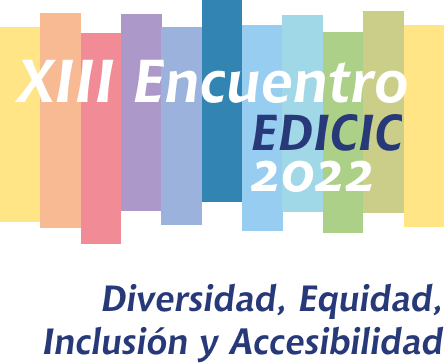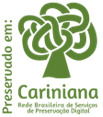Informational behavior of LGBTQIA+ undergraduate students from a public higher education institution
DOI:
https://doi.org/10.62758/re.v2i4.166Keywords:
Informational Behavior, User Study, Information Products and Services, LGBTQIA CommunityAbstract
This work aimed to characterize the informational behavior of the LGBTQIA+ community at Sao Paulo State University, Marilia campus. The choice of theme refers to the need to research aspects related to informational behavior interrelated to social groups in situations of vulnerability. Therefore, the following problem questions were established: how do LGBTQIA+ people find information related to their experience? What are the sources of information used? What is the purpose of the searches performed? Regarding the methodological procedures, it is qualitative research, of the descriptive-exploratory type. The research method adopted was the 'Case Study', data collection was carried out through the application of a questionnaire with open questions. From the bibliographic survey, it became evident that there is still little bibliographic material published on this topic in the literature in the areas of Information Science and Librarianship. The findings obtained through the application of the questionnaire revealed that members of the LGBTQIA+ community have specific informational needs that, unfortunately, have been neglected so far. It is concluded that the information services provided to the researched community must be diversified, in order to meet the existing informational demands.
References
Baptista, S. G. & Cunha, M. B. da (2007). Estudo de usuários: visão global dos métodos de coletas de dados. Perspectivas em Ciência da Informação, Belo Horizonte, 12(2), pp.168-184, maio/ago. Disponível em: https://www.scielo.br/j/pci/a/h6HP4rNKxTby9VZzgzp8qGQ/?format=pdf&lang=pt. Acesso em: 15 out. 2022. DOI: https://doi.org/10.1590/S1413-99362007000200011
Burnkrant, R. E. (1976). A motivational model of information-processing intensity. Journal of Consumer Research, 3(1), pp.21-30, Jun. Disponível em: https://www.jstor.org/stable/2489092. Acesso em: 15 out. 2022. DOI: https://doi.org/10.1086/208647
Calva González, J. J. (2004). Las necesidades de información: fundamentos teóricos y métodos. México: UNAM/CUIB. 286p. Disponível em: https://ru.iibi.unam.mx/jspui/bitstream/IIBI_UNAM/L110/1/necesidades_informacion_fundamentos.pdf. Acesso em: 16 out. 2022. DOI: https://doi.org/10.22201/cuib.9703217982p.2004
Choo, C. W. (2006). A organização do conhecimento: como as organizações usam a informação para criar significado, construir conhecimento e tomar decisões. 2.ed. São Paulo: Editora SENAC.
Crespo, I. M. (2005). Um estudo sobre o comportamento de busca e uso de informação de pesquisadores das áreas de Biologia Molecular e Biotecnologia: impactos do periódico científico eletrônico. 121f. Dissertação (Mestrado em Comunicação) – Programa de Pós-Graduação em Comunicação e Informação, Faculdade de Biblioteconomia e Documentação, Universidade Federal do Rio Grande do Sul. Porto Alegre. Disponível em: https://lume.ufrgs.br/bitstream/handle/10183/4387/000500810.pdf%20?sequence=1. Acesso em: 15 out. 2022.
Cooper, W. S. (1971). A definition of relevance for information retrieval. Information Storage and Retrieval, 7(1), pp.21-29, Jun. Disponível em: DOI: https://doi.org/10.1016/0020-0271(71)90024-6. Acesso em: 15 out. 2022. DOI: https://doi.org/10.1016/0020-0271(71)90024-6
Cunha, M. B. da. (1982). Metodologias para estudo dos usuários de informação científica e tecnológica. Revista de Biblioteconomia de Brasília, Brasília, 10(2), pp.5-19, dez. Disponível em: https://periodicos.unb.br/index.php/rbbsb/article/view/30334/26370. Acesso em: 15 out. 2022.
DERVIN, B. From the mind's eye of the user: The sense-making qualitative-quantitative methodology. In: GLAZIER, J. D.; POWELL, R. R. Qualitative research in information management. Englewood, CO: Libraries Unlimited, 1992. pp.61-84.
Dervin, B. & Nilan, M. (1986). Information needs and uses. In: Williams, M. E. (Ed.). Annual Review of Information Science and Technology. White Plains, NY: Knowledge Industry. v.21; pp.3-33.
Faleiros, V. P. (2006). Inclusão social e cidadania. International Conference on Social Welfare, 32. Anais Eletrônico... Brasília. Disponível em: https://www.icsw.org/images/docs/Events/2006_Brazil/17_07_PDF/vicente_faleiros.pdf. Acesso em: 15 out. 2022.
Flick, U. (2009). Introdução a pesquisa qualitativa. 3.ed. Porto Alegre: Artmed.
Figueiredo, L. M. O (1977). Conceito de relevância e suas implicações. Ciência da Informação, Brasília, 6(2). Disponível em: http://revista.ibict.br/ciinf/article/view/82. Acesso em: 15 out. 2022.
Fonseca, J. J. S. (2002). Metodologia da pesquisa científica. Fortaleza: UEC. (Apostila) Disponível em: http://www.ia.ufrrj.br/ppgea/conteudo/conteudo-2012-1/1SF/Sandra/apostilaMetodologia.pdf. Acesso em: 15 out. 2022.
Gil, A. C. (2002). Como elaborar projetos de pesquisa. 4.ed. São Paulo: Atlas. Disponível em: http://www.uece.br/nucleodelinguasitaperi/dmdocuments/gilcomoelaborarprojetodepesquisa.pdf. Acesso em: 15 out. 2022.
Gil, A. C. (2008). Métodos e técnicas de pesquisa social. 6.ed. São Paulo: Atlas. Disponível em: https://ayanrafael.files.wordpress.com/2011/08/gil-a-c-mc3a9todos-e-tc3a9cnicas-de-pesquisa-social.pdf. Acesso em: 15 out. 2022.
Järvelin, K. & Ingwersen, P. (2004). Information seeking research needs extension towards tasks and technology. Information Research, 10(1), Oct. Disponível em: http://InformationR.net/ir/10-1/paper212.html. Acesso em: 15 out. 2022.
Jesus, J. G. (2012). Orientação sobre identidade de gênero: conceitos e termos. Brasília: Edição do Autor.
Kuhlthau, C. C. (1993). A principle of uncertainty for information seeking. Journal of Documentation, 49(4), pp.339-355. Disponível em: DOI: https://doi.org/10.1108/eb026918. Acesso em: 15 out. 2022. DOI: https://doi.org/10.1108/eb026918
Lins, B. A., Machado, B. F. & Escoura, M. (2016). Diferentes, não desiguais: a questão de gênero na escola. São Paulo: Reviravolta. 142p.
Le Coadic, Y. F. (1996). A Ciência da Informação. Brasília: Briquet de Lemos. Disponível em: https://bibliotextos.files.wordpress.com/2012/07/a-cic3aancia-da-informac3a7c3a3o-le-coadic.pdf. Acesso em: 15 out. 2022.
Leckie, G. J., Pettigrew, K. E. & Sylvain, C. (1996). Modeling the information seeking of professionals: A general model derived from research on engineers, health care professionals, and lawyers. Library Quarterly, 66(2), pp.161-193. Disponível em: https://www.jstor.org/stable/pdf/4309109.pdf?refreqid=excelsior%3A0279396ae0750489e6d122037e50b675. Acesso em: 15 out. 2022. DOI: https://doi.org/10.1086/602864
Martínez-Silveira, M. & Oddone, N. (2007). Necessidades e comportamento informacional: conceituação e modelos. Ciência da Informação, Brasília, 36(1), pp.118-127, maio/ago. Disponível em: https://www.scielo.br/j/ci/a/KrG78hPcXjDbCyKLHWMcKNP/?format=pdf&lang=pt. Acesso em: 15 out. 2022. DOI: https://doi.org/10.1590/S0100-19652007000200012
Mott, L. (2005). A construção da cidadania homossexual no Brasil. Espaço Aberto: Democracia Viva, (25), pp.98-103, jan./fev. Disponível em: https://www.mpba.mp.br/system/files_force/biblioteca/direitos-humanos/direitos-da-populacao-lgbt/artigos_teses_dissertacoes/a_construcao_da_cidadania_homossexual_-_luiz_mott.pdf?download=0. Acesso em: 15 out. 2022.
Pinto, E. M. & Leite, F. C. L. (2018). Informação e diversidade: estudos de práticas informacionais em comunidades compostas por pessoas transgênero. Ponto de Acesso, Salvador, 12(1), pp. 97-112. DOI: 10.9771/rpa.v12i1.25448 Acesso em: 15 out. 2022. DOI: https://doi.org/10.9771/rpa.v12i1.25448
Todd, R. J. (2003). Adolescents of the information age: patterns of information seeking and use, and implications for information professionals. School Libraries Worldwide, 9(2), pp.27-46. Disponível em: https://citeseerx.ist.psu.edu/viewdoc/download?doi=10.1.1.548.1775&rep=rep1&type=pdf. Acesso em: 15 out. 2022.
Santos, R. N. R. dos, Targino, M. das G. & Freire, I. M. (2017). A temática diversidade sexual na Ciência da Informação: a perspectiva da responsabilidade social. REBECIN: Revista Brasileira de Educação em Ciência da Informação, 4(1), pp. 114-135, jan./jun. Disponível em: http://abecin.org.br/portalderevistas/index.php/rebecin/article/view/57/pdf. Acesso em: 15 out. 2022.
Saracevic, T. (2009). Information Science. In: Bates, Marcia & Maack, Mary Niles (Eds.). Encyclopedia of Library and Information Science. New York: Taylor & Francis. pp.2570-2586.
Simões, J. A. & Facchini, R. (2009). Na trilha do arco-íris: do homossexual ao movimento LGBT. São Paulo: Editora Fundação Perseu Abramo.
Wersig, G. & Neveling, U. (1975). The phenomena of interest to information science. The Information Scientist, 9(4), pp.127-140, Dec. Disponível em: https://sigir.org/files/museum/pub-13/18.pdf. Acesso em: 15 out. 2022.
Wilson, T. D. (2000). Human information behavior. Informing Science, 3(2), pp.49-56. Disponível em: http://www.inform.nu/Articles/Vol3/v3n2p49-56.pdf. Acesso em: 15 out. 2022.
Wilson, T. D. (1999). Models in information behaviour research. Journal of Documentation, 55(3), pp.249-270, Jun. Disponível em: https://doi.org/10.1108/EUM0000000007145. Acesso em: 15 out. 2022. DOI: https://doi.org/10.1108/EUM0000000007145
Wilson, T. D. (1981). On user studies and information needs. Journal of Documentation, 31(1), pp.3-15. Disponível em: https://www.researchgate.net/publication/249364883_On_User_Studies_and_Information_Needs/link/575086fd08ae1f765f93bc30/download. Acesso em: 15 out. 2022. DOI: https://doi.org/10.1108/eb026702
Yin, R. K. (2001). Estudo de caso: planejamento e métodos. 2.ed. Porto Alegre: Bookman. 205p.
Downloads
Published
How to Cite
Issue
Section
License
Copyright (c) 2022 Revista EDICIC

This work is licensed under a Creative Commons Attribution 4.0 International License.
The Association holds the copyright of the texts it publishes and, therefore, adopts a Creative Commons License, CC BY 4.0 DEED Attribution 4.0 International (https://creativecommons.org/
You are free to:
- Share: copy and redistribute the material in any medium or format for any purpose, even commercially.
- Adapt: remix, transform, and build upon the material for any purpose, even commercially.






